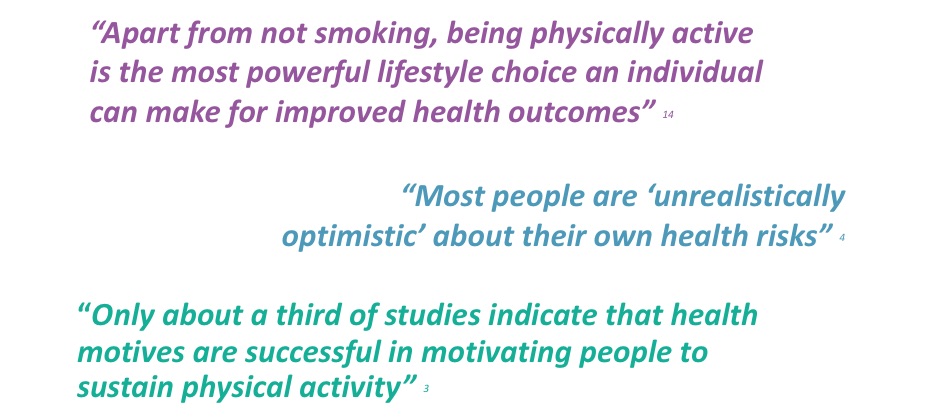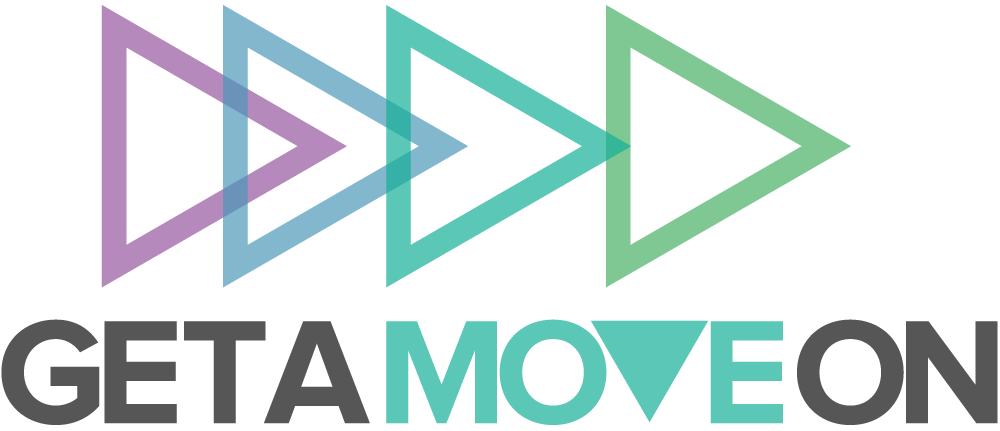Deep Dive #1
What really motivates people to be more active?

Find out more about the Deep Dive series.
What really motivates people to be more active?
Surface skim
We hear a lot about the health benefits of exercise, but are those what really motivates people to move more? Education about health benefits can help motivate people to be more active, but there is a wide range of potential motivators. We need to consider intrinsic motivators (things that are personally rewarding like enjoyment or a sense of accomplishment) as well as extrinsic motivators (where the reward is external, such as money, praise, awards, recognition or some other benefit like the promise of better health). Different people are motivated by different things - from sheer enjoyment, to the social aspects of physical activity, to the possibility of financial rewards. We need to understand the needs and motivations of our target communities and design programmes and promotional campaigns that speak to these and don’t just reflect public health concerns.
Deep dive
Do health benefits motivate people to be more active?
There is ‘conclusive and overwhelming’ scientific evidence for physical inactivity as a primary cause of 35 chronic diseases,1 some of which are now developing in younger adults due in significant part to physical inactivity2. But despite this compelling evidence, only about a third of studies show a positive link between health motives and sustained physical activity3. This suggests that health benefits aren’t effective motivators for most people so simply emphasising these is likely to have limited impact, especially as most people are ‘unrealistically optimistic’ about their own health risks4.
Other motivators: from fun to focus to financial rewards
Many other potential motivators for people to do more physical activity have been identified, from improved sleep, reduced stress, better concentration and focus, or simply feeling better about themselves and their lives5. Enjoyment is also an important motivator for sustaining physical activity65 and previously inactive people are often surprised by how much they enjoy physical activity compared to their expectations before starting6. When it comes to active travel such as cycling to work, the main motivators have historically been convenience, cost, speed and reliability, but environmental benefits may become more significant motivators as concern around these issues grows7.
Tailoring your approach
Specific communities may be more receptive to particular motivators. For example, it was found that older adults were more motivated by the social aspects of a physical activity programme - seeing others from their community while doing exercise or using local walking routes8. This may be a powerful motivator for younger people too. The Cares Family provides an interesting example of an initiative to bring together city-dwelling older and younger people who feel socially isolated, to take part in activities such as dance classes, gardening or even just shopping together9.
Fitness technologies (in a gym or personal technologies like wearable trackers) often provide people with feedback in terms of numbers but some may be more receptive to novel approaches to giving feedback, for example, more ‘playful’ feedback using music to support progress while also informing people about their movement10.
Others may respond more to external rewards than the intrinsic satisfaction of achieving a target. Research by Dr Kirk Plangger from Kings College London11 and the experience of SweatCoin12 and StreetTag66 provide evidence that tangible rewards for increasing physical activity can be a powerful motivator for some people.
Case Studies
Getting football fans active
Dr John Rooksby from Northumbria University worked with football fans to develop an application to promote activity. Their work demonstrates that important insights into how best to engage a target community can be gained by involving those communities in the design of a programme - in this case, an app to promote active travel to matches - especially those who are hardest to engage in physical activity programmes
Watch the project video: Designing an app to help football fans get match fit
Motivating activity with rewards
Dr Kirk Plannger at Kings College London has been investigating how “gamification” can be used to reward physical activity. His work shows how a combination of real rewards and motivational nudges can be used to keep people engaged with a physical activity programme. This model points the way to possible benefits for public health organisations to establish partnerships with the commercial sector to deliver sustainable incentive-driven programmes.
Watch the project video: Improving health using gamification
Sweatcoin – it pays to walk
Sweatcoin were on the panel for our Policy Dialogue. Their app converts the step-count recorded on smartphones into a virtual currency, so that users can generate financial rewards through physical activity. These rewards can be used to purchase products from an in-app marketplace. Sweatcoin has demonstrated sustainable physical activity behaviour change using a commercial business model43. This indicates that partnerships between public health organisations and the commercial sector to incentivise physical activity could be both cost-effective and sustainable. See more about how SweatCoin works
You may also be interested in:
Deep Dive #4: Should we just give everyone an activity tracker? Would that do the trick?
Deep Dive #5: Aren’t we all addicted to our phones? Shouldn’t we be using technology less, not more?







